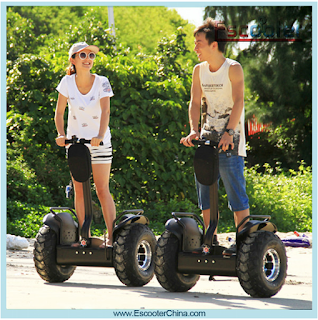You’re teaching a toddler to ride a bike.
You don’t want to stick them on a bicycle straight away. That would be an injurious, bloody, tear-filled, failure. You want to give them a little extra support.
You go to the bike shop. A spotty teenager tells you that you have two options: a balance bike, or stabilisers.
You may not think it matters. Both seem similar: both keep the child upright, moving along, in a way they couldn’t on a regular bike. Your choice has big implications.
Give stabilisers, and you get something that looks more like a real bike. But the stabilisers are doing the hard work of balancing for the kid. Yes, it gives a child a chance to practice some steering, and it’s nice for them to be able to keep up with others who can already ride, but the whole time they’re riding with stabilisers, they’re missing out on practice of the core element of bike riding: staying upright by balancing.
A balance bike, on the other hand, specifically hones in on that crucial skill. It makes them work harder, concentrate more on, hone in on that one critical element of bike riding. It’s all about the balance.
So in fact, stabilisers and balance bikes are polar opposites: one removes the balancing aspect altogether, and one takes the balancing aspect and puts it centre stage.
The nature of the support, scaffolding and differentiation we give can be like stabilisers or like a balance bike. It can either remove the most crucial, central tricky part of our subject from the task, or put it centre stage.
It can be difficult to tell the difference on a surface level. It can be impossible to tell based on the work produced. One needs to think about the long term implications. We remember what we think about. Is your scaffold encouraging or discouraging thinking about the core subject content?
“Stabiliser help” helps pupils by allowing them not to think about the hard stuff. A literacy mat that gives them the answer to whether it’s “they’re” or “their”, so they never have to figure it out for themselves. A times table grid poster up in class, so the pupils can outsource their knowledge of basic number facts and never have to automate them. Cloze sentences so tightly controlled that it becomes an exercise in “pick the adjective” rather than construction of an argument.
“Balance bike help” makes things more accessible, but in the opposite way to stabilisers. It concentrates on that core bit of thinking that is key for ultimate success. It might be spending a whole lesson on a sentence. Going back three steps to concentrate on the underpinning knowledge they’re missing. Giving mnemonics that cue deeper domain content.
The key questions need to be:
1. What do my pupils need to be thinking about to master this content?
2. Does my scaffold mean they concentrate on that thinking, or does it do that thinking for them?
Balance bike tasks might seem less impressive than a stabiliser task. Short term, the evidence from observations and book looks might be more favourable to stabiliser tasks. This is the problem with focusing on performance versus learning. Long term, it’s balance bikes that’ll lead to success on the real thing. Let’s throw the stabilisers away.

没有评论:
发表评论